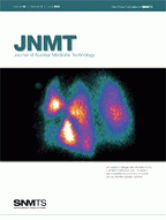Article Figures & Data
Tables
Name Type Iodine content (mg/mL) Osmolality Ionic Diatrizoate (Hypaque 50; GE Healthcare) Monomer 300 1,550 (high) Metrizoate Isopaque (Coronar 370; Nycomed A/S) Monomer 370 2,100 (high) Ioxaglate (Hexabrix; Mallinckrodt, Inc.) Dimer 320 580 (low) Nonionic Iopamidol (Isovue-370; Bracco Diagnostics Inc.) Monomer 370 796 (low) Iohexol (Omnipaque 350; GE Healthcare) Monomer 350 884 (low) Iodixanol (Visipaque 320; GE Healthcare) Dimer 320 290 (iso) Factor Predisposing characteristic Age Infants and those older than 60 y Sex Females > males Underlying medical conditions Asthma, heart disease, dehydration, renal disease, diabetes Hematologic conditions Myeloma, sickle cell disease, polycythemia Medications NSAIDs, IL-2, β-blockers, biguanides Contrast-related >20 mg iodine, faster injection rate, intraarterial, previous contrast reactions NSAIDs = nonsteroidal antiinflammatory drugs; IL-2 = interleukin-2.
- TABLE 3
Premedication Protocols for Patients with Previous or Increased Risk for Contrast Reactions
Premedication Protocol Corticosteroids (any of the following) Prednisone: 50 mg orally, 13, 7, and 1 h before contrast injection Hydrocortisone: 200 mg intravenously, 1 h before contrast injection Methylprednisone: 32 mg orally, 12 and 2 h before contrast media injection Antihistamine (optional) Diphenhydramine: 50 mg intravenously/intramuscularly/ orally 1 h before contrast injection Principle Strategy A Assessment (severity and category of reaction): blood pressure and pulse monitoring, ECG monitor for evaluation of cardiac rhythm Assistance (call for it) Airway, oxygen Access (venous)—secure/improve intravenous lines B Breathing (begin cardiopulmonary resuscitation if necessary, bag-valve mask or mouth mask) Beware of paradoxical responses (e.g., β-blockers may prevent tachycardia response) C Categorize reaction and patient status Circulatory assistance, intravenous fluids Call cardiopulmonary arrest response team if necessary Cardiac output assessment, decreased venous return D Drugs: dose and route, do not delay Do monitor, assess, and reassure patients ECG = electrocardiogram.
Reaction Etiology Monitor… Treatment (28–30) Anaphylactoid Urticaria (skin rash) Anaphylactoid reaction Initial size with marking and follow Usually none; diphenhydramine, 25–50 mg orally/intramuscularly/intravenously; epinephrine (1:1,000), 0.1–0.3 mL subcutaneously/intramuscularly Bronchospasm Anaphylactoid reaction Oxygen saturation, pulse, BP Secure airway; oxygen, 6–10 L/min; metaproterenol/terbutaline inhaler, 2–3 puffs; epinephrine (1:1,000), 0.1–0.3 mL subcutaneously/intramuscularly; epinephrine (1:10,000), 1 mL intravenously (slowly) if hypotensive; call the emergency medical team Facial or laryngeal edema Anaphylactoid reaction Oxygen saturation, pulse, BP Secure airway; oxygen, 6–10 L/min; call the emergency medical team if severe; epinephrine (1:1000), 0.1–0.3 mL subcutaneously/ intramuscularly; epinephrine (1:10,000), 1 mL intravenously (slowly) if hypotensive; call the emergency medical team Hypotension and tachycardia (fast pulse) Vasodilation Oxygen saturation, pulse, BP Elevate legs 60°; oxygen, 6–10 L/min; rapid intravenous fluids; epinephrine (1:10,000), 1 mL intravenously (slowly); call the emergency medical team Hypotension and bradycardia (slow pulse) Vasovagal response Oxygen saturation, pulse, BP Elevate legs 60°; oxygen, 6–10 L/min; atropine, 0.6–1 mg intravenously (slowly); repeat to total of 2–3 mg (0.04 mg/kg) if needed; call the emergency medical team Nonanaphylactoid Cardiac arrhythmia Ionic abnormalities; chemical variations Oxygen saturation, pulse, BP, ECG Follow ACLS* protocols; call the emergency medical team Hypertension Histamine release of catecholamine Oxygen saturation, pulse, BP, ECG Nitroglycerine, 0.4 mg sublingually; nitroglycerine; 2% ointment; phentolamine, 5 mg intravenously for pheochromocytoma; call the emergency medical team Seizures Ionic abnormalities; chemical variations Oxygen saturation, pulse, BP, ECG Secure airway; oxygen, 6–10 L/min; diazepam, 5 mg intramuscularly/intravenously; midazolam, 0.5–1 mg intravenously; phenytoin infusion, 15–18 mg/kg at 50 mg/min; call the emergency medical team Pulmonary edema Osmolar changes, causing large fluid volume shifts Oxygen saturation, pulse, BP, ECG Secure airway; oxygen, 6–10 L/min; furosemide, 20–40 mg intravenously (slowly); morphine, 1–3 mg intravenously; call the emergency medical team All medications are to be administered under physician supervision. BP = blood pressure; ECG = electrocardiogram; ACLS = advanced cardiovascular life support.
Category Specifics Posted information Name and contact information for physician on duty, phone number of emergency response team Support apparatus Oxygen cylinders, flow valves, tubing, nasal prongs, oxygen masks (adult and pediatric sizes), bag-valve mask, valve masks, endotracheal tubes, laryngoscopes, intravenous fluids (normal saline, Ringer's lactate) Emergency and monitoring devices Defibrillator, ECG, blood pressure/ pulse monitor, pulse oximeter Medications Epinephrine, 1:10,000, 10-mL preloaded syringe; epinephrine, 1:1,000, 1-mL preloaded syringe; atropine, 1 mg in 10-mL preloaded syringe; β-agonist inhaler; diphenhydramine for intramuscular/intravenous injection; nitroglycerin, 0.4-mg tabs, sublingually ECG = electrocardiogram.
Risk factor Method Advanced age, antibiotics (aminoglycosides such as gentamycin), cardiovascular disease, chemotherapy, collagen vascular diseases, elevated serum creatinine levels (variable levels, 1.3–2.0 mg/dL), dehydration, diabetes (insulin-dependent > 2 y; non–insulin-dependent > 5 y), nonsteroidal antiinflammatory medications, paraproteinemias (myeloma), renal disease, kidney transplant Use the smallest amount of contrast material possible; discontinue other nephrotoxic medications before the procedure; maintain adequate interval between procedures requiring contrast material; maintain hydration (oral, 500 mL before the procedure and 2,500 mL during the 24 h after the procedure; intravenous, 0.9% or 0.45% saline, 100 mL/h, beginning 4 h before the procedure and continuing for the 24 h after the procedure)







